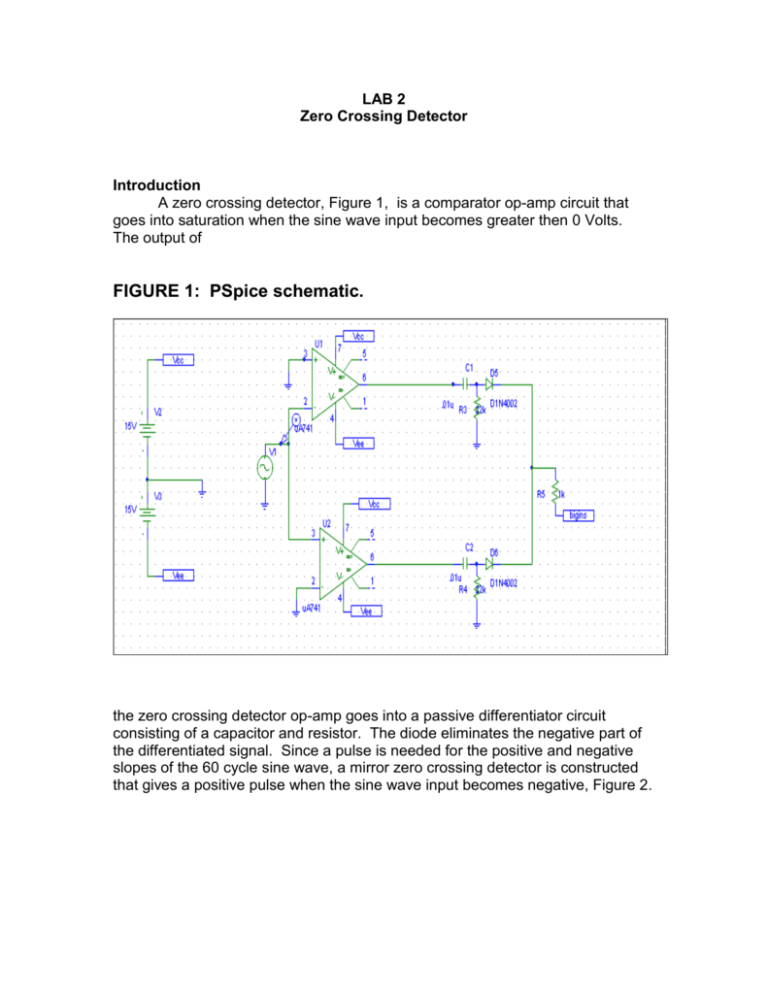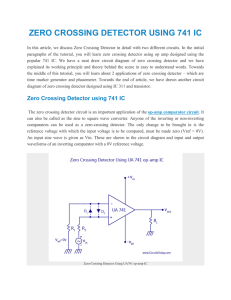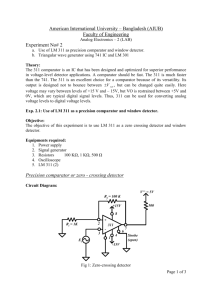Electronics II
advertisement

LAB 2 Zero Crossing Detector Introduction A zero crossing detector, Figure 1, is a comparator op-amp circuit that goes into saturation when the sine wave input becomes greater then 0 Volts. The output of FIGURE 1: PSpice schematic. the zero crossing detector op-amp goes into a passive differentiator circuit consisting of a capacitor and resistor. The diode eliminates the negative part of the differentiated signal. Since a pulse is needed for the positive and negative slopes of the 60 cycle sine wave, a mirror zero crossing detector is constructed that gives a positive pulse when the sine wave input becomes negative, Figure 2. FIGURE: 2 P-SPICE Chart 10V 0V -10V 0s V(V3:+) 10ms V(R4:1) 20ms 30ms 40ms 50ms Time Procedure: 1. Build a zero crossing detector in P-Spice (ORCAD). When constructing of the zero crossing detector the following parts will be needed: 15V power supply, 60Hz input signal, 2-A 741 op amp chips, 2-0.01f capacitors, 2D1N4002 diodes, 2-22k resistors, and a 1k resistor. 2. After checking the operation of the circuit, construct the circuit. 3. Check the operation of the circuit and include the output oscilloscope waveform, Figure 3, in your report. 4. Write a report using the format style included in the web site. FIGURE: 3











